Last May I saw Andrena agillisima for the first time (See my blog Andrena agillisima). Now I have discovered a nesting place at the bottom of my garden.
Some years ago a large Poplar tree fell down in a storm. The tree was cut up and used for the fire in due course but the root was left as it had fallen in a part of the garden that was very overgrown at that time. It has formed a very large well-drained mound and this year I spotted the holes and the Andrena agilissima.
However, despite seeing them flying too and fro, I have not been able to get a photograph very easily, as they do not hang about. However, my patience has been rewarded.
I at last managed to get a shot of the black and white head surveying the world from the security of her burrow.
Then I noticed another antenna appear.
Then a pair of antennas appeared.
The second bee pushed herself under the first in her wish to exit the common hole.
I had not realised that the Andrena agillissima would share the entrance holes to the colony but inside she will build her own capsule for her egg to pass through the larval stages and overwinter as an adult.
The first bee only hesitated a few seconds before joining the second to search for flowers. She shouldn’t have had far to go if she wanted to try my sprout plants which are flowering specially for her. You can see her take flight in the slideshow below.

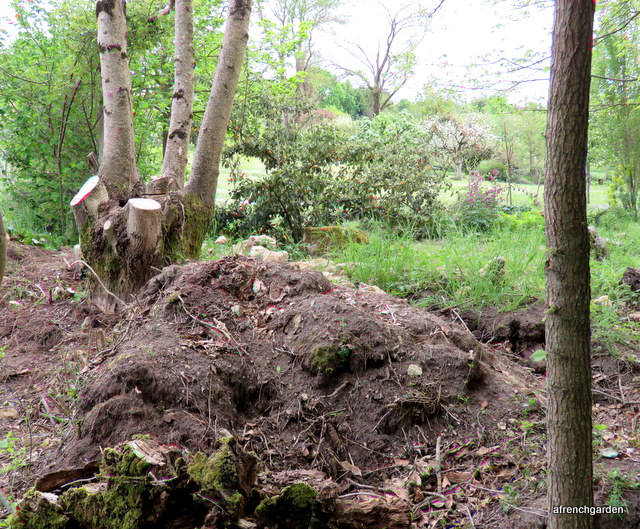
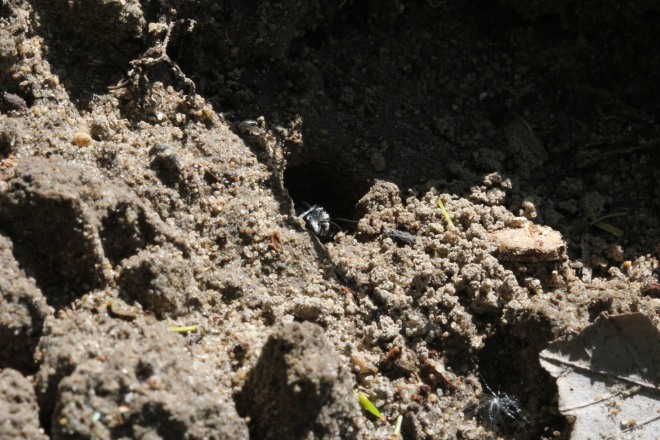
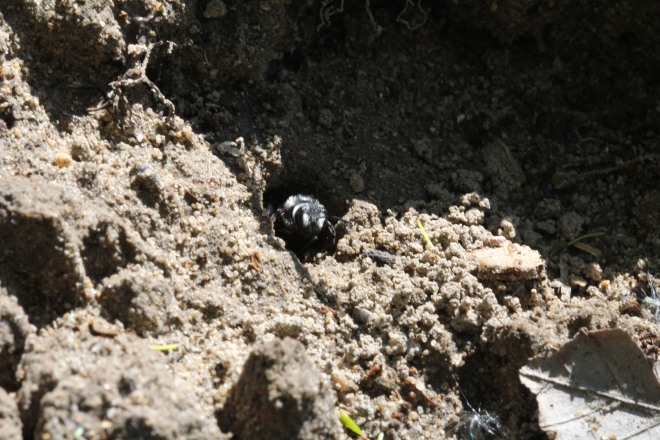
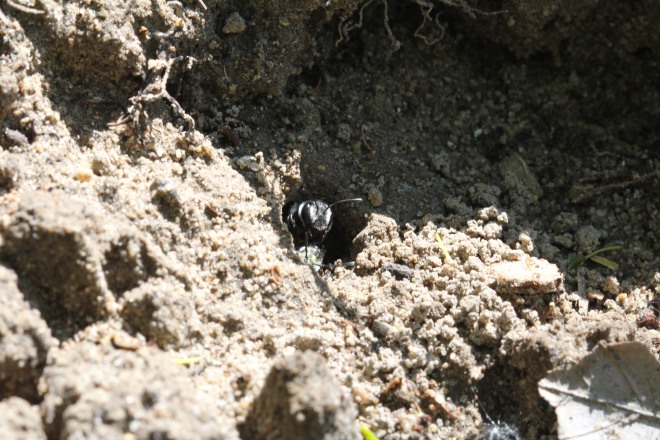
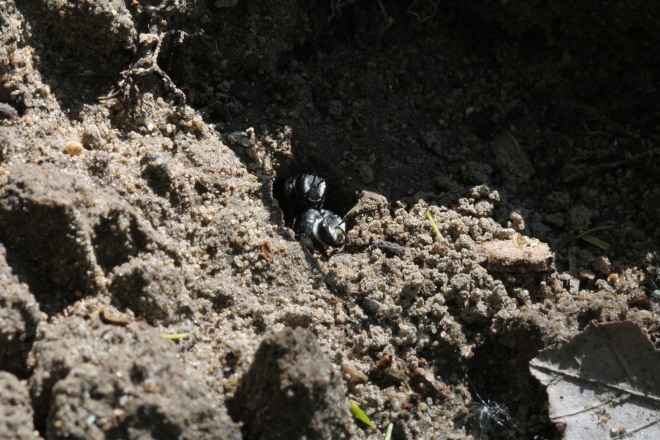
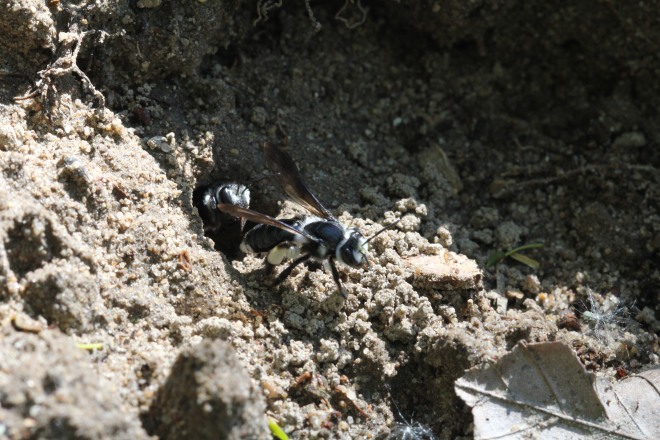
Ah so lovely. They look so sweet. Well done on getting some non-blurry photos, I know how fast the little bees can be!
LikeLike
It takes a bit of guessing what is the best time to sit in wait for them. It was later in the morning when the sun was warming things up – I don’t think they are very early risers. Amelia
LikeLike
Good sleuthing finding their colony! I still haven’t figured out where the bumblebees are nesting.
LikeLike
It was really by chance but I do look for holes in the ground where I see dry patches of ground. I think it will be easier to see the bumblebee nests later when there are more queens on the eggs. I still see some queens around. I saw a lapidarius queen go into a hole in the house wall behind a rose and never come out. I have marked the hole in my mind and I will keep watch in case she sets up home. I don’t expect to be able to catch any activity until she hatches out some workers and that will take a few weeks yet. That is if she succeeds in nesting there. Amelia
LikeLike
Great photos Amelia. I really like the slideshow as an alternative to video. Does this species use set locations to develop bigger colonies over time?
BW
Julian
LikeLike
This is only a personal observation but bees seem to return year after year to nesting sites. I think my tree root will have a finite life, though, as it will surely be washed away over time and as the roots decay. I have seen very large colonies expanding over a large area under vines. The land under the vines here is treated with herbicide and the mining bees like the exposed dry earth. Amelia
LikeLike
This year I am more aware of Solitary bees but am finding it difficult to make a confident identification. I guess the more I study them the more I will become familiar withe differences. I really enjoy your studies Amelia and find your posts really helpful. Lovely post too.
LikeLike
It is very difficult to identify solitary bees. Most of the work seems to be done on studying the bees phylogeny and often bees are captured in nets or traps and studied by comparative anatomy. There is much less to be found out easily about habitat, flower preferences and life cycle. There is still a lot that can be learnt about them by just observing them. Amelia
LikeLiked by 1 person
I have just started to read Dave Goulson’s book A sting in the Tale, you mentioned him in your blog. I am enjoying observing and hoping over time I will begin to understand what I am seeing.
LikeLike
I’ve loved both his books. I just wish identifying bumble bees was easier but they are a lot of fun to watch. Amelia
LikeLiked by 1 person
It’s nice to have the colony in your garden, we dont get these Andrena in the UK apart from the Channel Islands. Have they already mated?
Their name implies “the most agile” and I wondered if they were?
LikeLike
They are quite large bees, longer than honey bees and although they are quite nifty, I don’t find them any faster or more athletic than most bees. I have wondered about the name too. Amelia
LikeLike
How lovely that they have a place to live in your garden. Interesting about the name, maybe agile because they tunnel underground?
LikeLike
Lots of bees tunnel underground so we are still in the dark as to the origin of the name. I’ve never seen it referred to in any books. Another mystery about solitary bees. Amelia
LikeLike